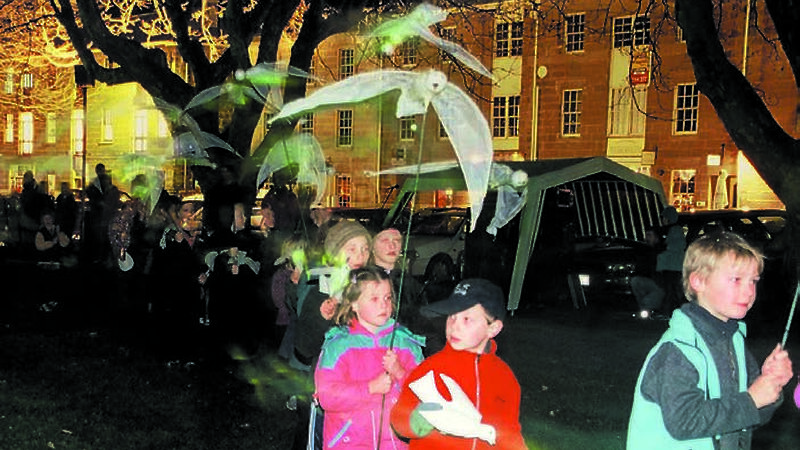Antarcticans have a long history of celebrating midwinter’s day. Falling on the winter solstice when sunshine is at its minimum, it provides a milestone to mark the darkest time of the year after which the sun’s light and warmth return. It’s the southern equivalent of the northern hemisphere’s Christmas and is traditionally celebrated with food, wine, and original (and highly imaginative) entertainment.
Tasmanians – especially those of its capital, Hobart – have had Antarctic connections since the early days of Southern Ocean exploration and industry, and in a place where seasons are clearly defined, feel an empathy with those experiencing Antarctica’s dark winter. In 2002 they celebrated the second – and by the far the biggest – Antarctic Tasmania Midwinter Festival. Last year's one-day pilot, which focused on Antarctic education for school children, was expanded into a nine-day, state-wide event.
The 2002 festival inspired people to venture out in the middle of the Tasmanian winter, often at night. The activities ranged from displays and educational activities to a community barbecue and a traditional dinner, where hundreds of Hobartians celebrated the season the Antarctic way. The Longest Night Film Festival helped to create an atmosphere by displaying an international collection of films on all things cold and polar.
The Australian Antarctic Division contributed a photographic exhibition, lectures on Antarctic science and demonstrations of Antarctic operations which included diving, zodiac boat operations and a crevasse rescue. Crevasses are rare in Hobart so a suitable blank wall was substituted.
Tasmania’s diverse range of polar organisations was well represented, with events organised by the Australian Antarctic Division, Hobart City Council, CSIRO, Antarctic Adventure and the Tasmanian Polar Network. The Hotel Grand Chancellor provided a venue for formal events and the festival’s events were strongly supported promoted in local and interstate media.
The future of the festival, overseen and coordinated by the Department of State Development, seems assured. Held over eight days from June 15 to 23, attendance far exceeded the organising committee’s expectations. Planners of next year’s event are seeking to attract many more interstate and international visitors and to make connections with complementary northern hemisphere polar celebrations.

